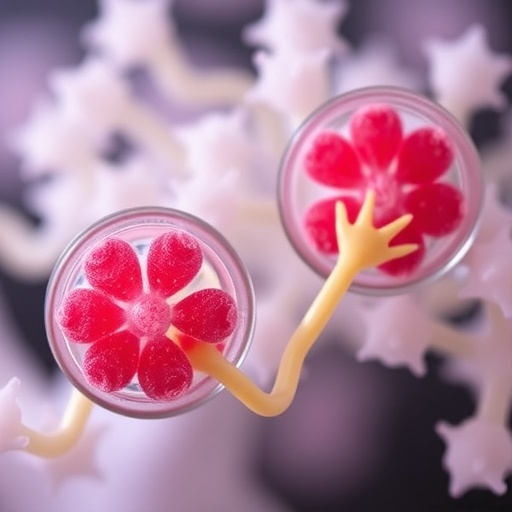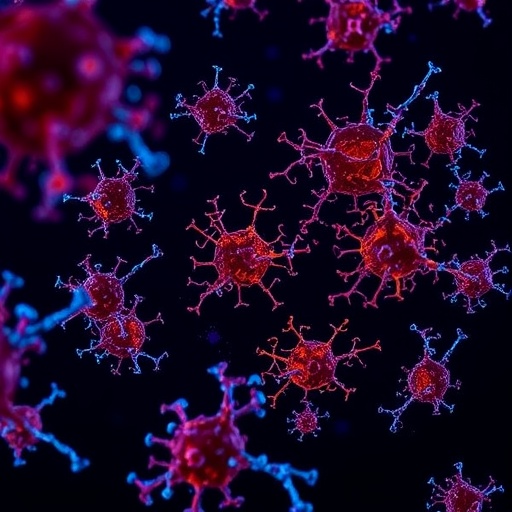Participants in a phase I/II clinical trial of a new enzyme-based treatment for severe dry eye disease experienced reduced signs of disease and discomfort, according to a paper in Translational Vision Science and Technology.
The trial compared eye drops containing a biosynthetic form of an enzyme called DNase with eye drops without the enzyme. DNase breaks up nucleic acid-based material on the surface of the eye.
“Participants in the trial who used the drops with DNase reported less eye discomfort and their corneas were healthier,” said Dr. Sandeep Jain, professor of ophthalmology and visual sciences in the University of Illinois at Chicago College of Medicine and principal investigator of the clinical trial.
In dry eye disease, production of tears is dysregulated, and the cornea, the transparent outer layer of the eye, becomes inflamed. In severe dry eye disease, which often accompanies diseases such as Sjogren’s syndrome and ocular graft-versus-host disease, the inflammation in the corneal tissue can become extreme enough to cause disabling eye pain and sensitivity to light.
In previous research, Jain and colleagues discovered that strands of DNA form webs on the surface of eyes affected by severe dry eye disease. This material causes an inflammatory response that further irritates the eye.
“In dry eye disease, several things happen,” Jain explained. “There is an increase in the number of white blood cells called neutrophils that gather on the surface of the eye. Neutrophils release DNA which forms webs on the cornea called neutrophil extracellular traps, which cause inflammation of the ocular surface and attract additional neutrophils in a vicious cycle.”
Normally, enzymes present in tears chop up and clear DNA and other debris on the cornea, but in patients with dry eye disease, there is not enough DNase to clear the material.
In the randomized, placebo-controlled phase I/II clinical trial, Jain and colleagues enrolled 47 participants with severe dry eye disease. About half the participants had a diagnosis of Sjogren’s syndrome and 17% had graft-versus-host disease — both of which are associated with significant deficits in tear production. Forty-one participants completed the trial.
Participants were given eye drops containing either DNase or a placebo formulation and instructed to administer one drop of the solution to each eye four times per day for eight weeks. The researchers evaluated patients’ symptoms through questionnaires and measured the degree of corneal damage and amount of DNA webs and other pro-inflammatory material on the surface of the eye before and for the duration of the study.
The researchers found that participants in the DNase group had a statistically significant and clinically meaningful reduction in corneal damage at eight weeks compared with the placebo group. Questionnaire scores related to symptoms also reflected significant improvement among patients in the DNase group compared with placebo, who also had reduced amounts of corneal DNA webs and other material on the surface of the eye.
“The data from this early clinical trial suggests that DNase eye drops may be safe and effective for treating severe dry eye, and we look forward to conducting larger randomized trials to definitively prove its efficacy,” Jain said.
DNase is currently approved by the U.S. Food and Drug Administration to treat cystic fibrosis. Its use for treating severe dry eye that doesn’t respond to other medications is still considered experimental by the FDA.
“The burden of severe dry eye is much greater than just having an occasional feeling of dryness,” Jain said. “It can severely compromise quality of life to the point of disability and can compromise a person’s vision. There are currently only two approved drugs to treat dry eye, and they don’t work for everyone, especially those with severe disease, so having a new drug that can treat the disease is very important.”
###
Christine Mun, Shilpa Gulati, Sapna Tibrewal, Yi-Fan Chen, Seungwon An, Bayasgalan Surenkhuu, Ilangovan Raju, Morgan Buwick, Anna Ahn, Ji-Eun Kwon, Nour Atassi, Anubhav Pradeep and Dr. Damiano Rondelli are co-authors on the paper.
This research was supported by Genentech, National Eye Institute grants R01 EY024966 and P30 EY001792, a Research to Prevent Blindness Physician Scientist Award and a UIC Chancellor’s Innovation Fund Award. Jain is the inventor on a patent assigned to the University of Illinois at Chicago that covers the use of DNase to treat dry eye disease.
Media Contact
Sharon Parmet
[email protected]
Related Journal Article
https:/
http://dx.




